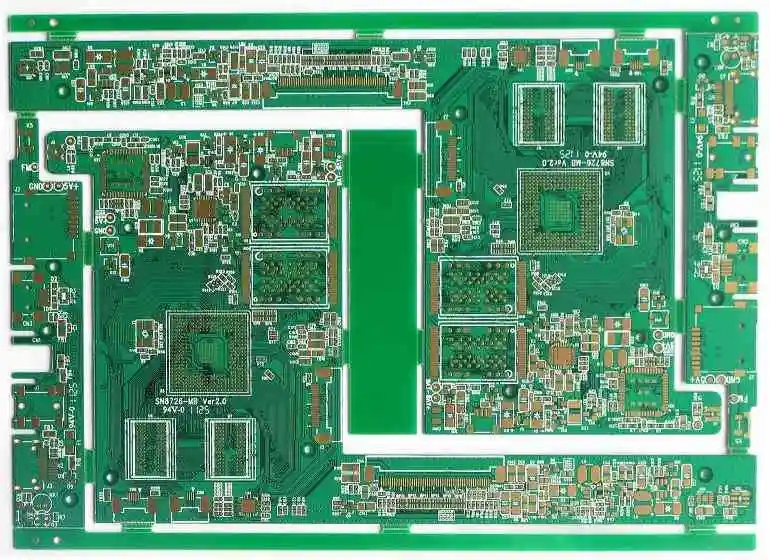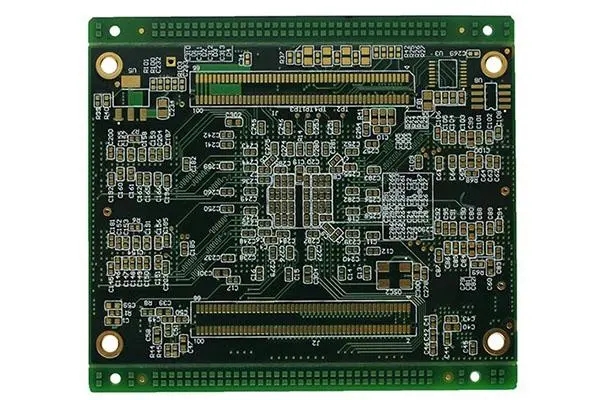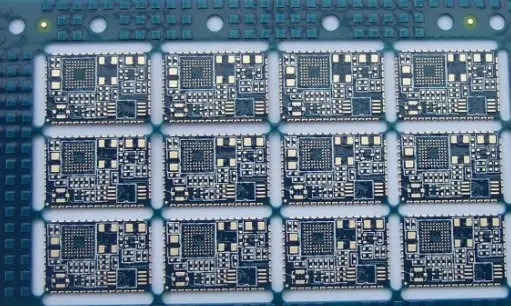
Circuit Board Factory: Several Key Points of RF Circuit Board Design
Circuit board manufacturer, circuit board design, PCBA manufacturer will explain to you the key points of circuit board factory: RF circuit board design
Although there are many uncertainties in the theory of RF circuit board design, there are still many rules that can be followed in RF circuit board design. However, in actual design, the real practical skill is how to compromise these rules when they cannot be implemented due to various restrictions. This paper will focus on various issues related to the partition design of RF RF circuit boards.
1. Type of micro vias
The circuits of different properties on the RF PCB circuit board must be separated, but they must be connected in the best condition without electromagnetic interference, which requires the use of micro vias. Generally, the diameter of micro vias is 0.05mm to 0.20mm. These vias are generally divided into three categories, namely blind vias, buried vias and through vias. The blind hole is located on the top and bottom surfaces of the printed circuit board, and has a certain depth. It is used to connect the surface line and the lower inner line. The depth of the hole usually does not exceed a certain ratio (aperture). Embedded hole refers to the connection hole located in the inner layer of the printed circuit board, which will not extend to the surface of the printed circuit board. The above two types of holes are located in the inner layer of the circuit board. Before lamination, the through hole forming process is used to complete the process. During the through hole forming process, several inner layers may be overlapped. The third is called through hole, which passes through the whole circuit board and can be used for internal interconnection or as the adhesive positioning hole of components.
2. Adopt zoning techniques
When designing RF RF circuit board, high power RF amplifier (HPA) and low noise amplifier (LNA) should be separated as far as possible. In short, high power RF transmitting circuit should be kept away from low noise receiving circuit. This can be easily done if there is a lot of space on the RF PCB. However, when there are many parts and components, the PCB space will become very small, so this is difficult to achieve. They can be placed on both sides of the RF PCB, or they can work alternately instead of simultaneously. High power circuits can sometimes include RF buffers and voltage controlled oscillators (VCOs).
Design zones can be divided into physical partitioning and electrical partitioning. Physical partition mainly involves the layout, orientation and shielding of components; The electrical partition can be further divided into power distribution, RF wiring, sensitive circuit and signal, grounding and other partitions.
3. Entity partition
The layout of components is the key to an excellent RF design. The most effective technology is to first fix the components on the RF path and adjust their orientation to minimize the length of the RF path. And keep RF input away from RF output, and keep it away from high power circuit and low noise circuit as far as possible.

The most effective circuit board stacking method is to arrange the main grounding on the second layer below the surface layer, and walk the RF line on the surface layer as much as possible. Minimizing the size of the via on the RF path can not only reduce the path inductance, but also reduce the number of solder joints on the main ground, and reduce the chance of RF energy leakage to other areas in the laminate.
In physical space, linear circuits such as multistage amplifiers are usually sufficient to isolate multiple RF regions from each other, but duplexers, mixers, and IF amplifiers always have multiple RF/IF signals interfering with each other, so care must be taken to minimize this impact. RF and IF wiring shall be crossed as far as possible, and a grounding area shall be separated between them as far as possible. The correct RF path is very important for the performance of the whole PCB RF circuit board, which is why component layout usually takes up most of the time in the design of mobile phone PCB RF circuit board.
On the RF circuit board of the mobile phone PCB, it is usually possible to place the low-noise amplifier circuit on one side of the PCB RF circuit board, and place the high-power amplifier on the other side, and finally connect them to one end of the RF antenna and the other end of the baseband processor on the same side through a duplexer. This requires some techniques to ensure that RF energy is not transferred from one side of the board to the other through the via. The common technique is to use blind holes on both sides. The adverse effect of vias can be minimized by arranging blind holes in the area where both sides of the RF PCB circuit board are free from RF interference.
4. Metal shield
Sometimes, it is unlikely to reserve enough separation between multiple circuit blocks. In this case, it must be considered to use metal shielding covers to shield RF energy in the RF area. However, metal shielding covers also have side effects, such as high manufacturing costs and assembly costs.
It is difficult to ensure high precision when manufacturing metal shielding covers with irregular shape, and rectangular or square metal shielding covers restrict the layout of components; The metal shielding cover is not conducive to the replacement of parts and components and fault displacement; Because the metal shield must be welded to the ground and must be kept at a proper distance from the components, it needs to occupy valuable space for PCB RF circuit boards.
It is very important to ensure the integrity of the metal shield as much as possible, so the digital signal line entering the metal shield should go through the inner layer as much as possible, and it is better to set the lower layer of the signal line layer as the ground plane. RF signal lines can be routed out from the small gap at the bottom of the metal shield and the wiring layer at the grounding gap. However, the gap should be surrounded by a large grounding area as much as possible. The grounding on different signal layers can be connected by multiple vias. Despite the above shortcomings, the metal shield is still very effective and often the only solution for isolating critical circuits.
5. Power decoupling circuit
Proper and effective chip power decoupling circuit is also very important. Many RF chips integrated with linear circuits are very sensitive to power supply noise. Generally, each chip needs to use up to four capacitors and an isolation inductor to filter out all power supply noise.
The minimum capacitance value usually depends on the resonant frequency of the capacitor itself and the inductance of the connecting pin, and the value of C4 is selected accordingly. The values of C3 and C2 are relatively large due to the inductance of their own pins, so the RF decoupling effect is worse, but they are more suitable for filtering noise signals with lower frequencies. RF decoupling is completed by inductor L1, which makes RF signal unable to be coupled to the chip from the power line. Because all cabling is a potential antenna that can receive and transmit RF signals, it is necessary to isolate RF signals from key lines and components.
The physical location of these decoupling components is also often critical. The layout principle of these important components is that C4 should be as close to the IC grounding pin as possible and grounded, C3 must be the closest to C4, C2 must be the closest to C3, and the connection route between the IC grounding pin and C4 should be as short as possible. The grounding terminals of these components (especially C4) should normally be connected to the chip's grounding pin through the first grounding plane under the board. The vias connecting the components to the ground plane should be as close as possible to the component pads on the RF PCB processing. It is better to use the blind holes punched on the pads to minimize the inductance of the connecting lines. The inductance L1 should be close to C1.
An integrated circuit or amplifier often has an open collector output, so a pull-up inductor is required to provide a high impedance RF load and a low impedance DC power supply. The same principle applies to decoupling the power supply end of this inductor. Some chips require multiple power supplies to work, so two to three sets of capacitors and inductors may be required to decouple them respectively. If there is not enough space around the chip, the decoupling effect may be poor. In particular, it should be noted that inductors are rarely parallel to each other, because this will form an air core transformer, and mutual induction will generate interference signals. Therefore, the distance between them should be at least equal to one of the heights, or arranged at right angles to minimize their mutual inductance. Circuit board manufacturers, circuit board designers and PCBA manufacturers will explain to you the key points of circuit board manufacturers: RF circuit board design.









